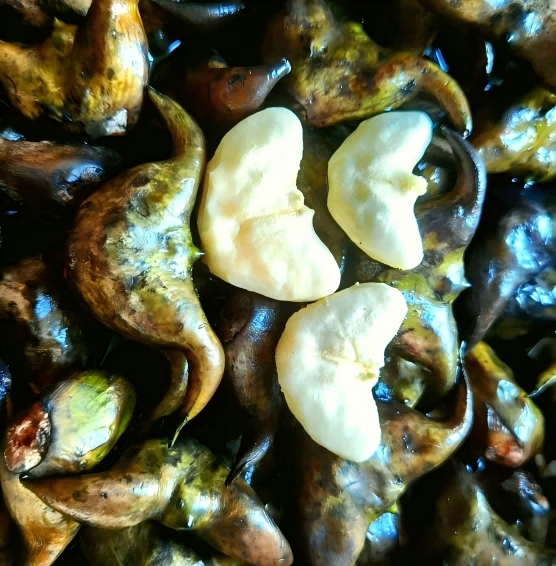Fresh water chestnuts, freshly harvested from the water, are more brownish-red than jet-black. Water chestnut season runs from September to November. Where can you find delicious water chestnuts? Water chestnuts contain high-quality starch and have a low glycemic index, making them a great alternative to rice as a staple food. What else might you not know about water chestnuts?
Where do water chestnuts grow? In water.
Water chestnuts are not grown on land; they are the fruit of aquatic plants, which thrive in warm, humid environments.
Water chestnuts are easily recognized by their hard, pointed shells and horn-like appearance. We think water chestnuts should be dark black, but freshly harvested from the water are actually reddish-red, gradually turning brown-black as they age.
Common varieties of water chestnuts include the two-horned (two-horned) and the four-horned (four-horned) varieties. Their harvesting times differ slightly: the four-horned (four-horned) can be harvested from May to June, while the two-horned (two-horned) can be harvested starting in September.
Because water chestnuts grow in water, harvesting them is quite laborious. If you go into the water, you must wear full agricultural waterproof gear and long waterproof gloves. Harvesting requires using small boats or wading through muddy ponds. Some heavy water chestnuts can become submerged in the water, making both picking and maneuvering challenging.
Nutritional Value of Water Chestnuts
Water chestnuts are a whole grain root vegetable, primarily composed of sugars and starches. However, they are lower in calories than white rice and are high in dietary fiber among root vegetables. They are suitable for mixing with rice (although the amount of rice should be reduced) or as a substitute for a staple food.
Water chestnuts contain a variety of minerals, such as phosphorus, magnesium, sodium, and calcium, as well as vitamins such as vitamins C and E. Their high potassium content makes them an excellent mineral supplement for cells, nerves, and blood pressure. However, if you need to limit potassium, such as with kidney disease, you should be cautious and limit your intake of water chestnuts.
When choosing water chestnuts, choose those that appear plump and have a substantial feel. It’s said that firm corners indicate a tender, flavorful interior. After cleaning the water chestnuts, boil them in boiling water for at least 40 minutes, or steam them in a rice cooker. Remove the shells and enjoy the tender flesh.
In autumn, use water chestnuts in your cooking. By simmering them and letting them absorb the flavor, you’ll enjoy the tender texture and complement the flavor of the dishes they serve. Water chestnuts can also help nourish the spleen and stomach. A warming water chestnut and pork rib soup with ginger slices or scallions is a great way to warm your stomach and nourish your body with the benefits of gingerol and sulfides.


Leave a Reply